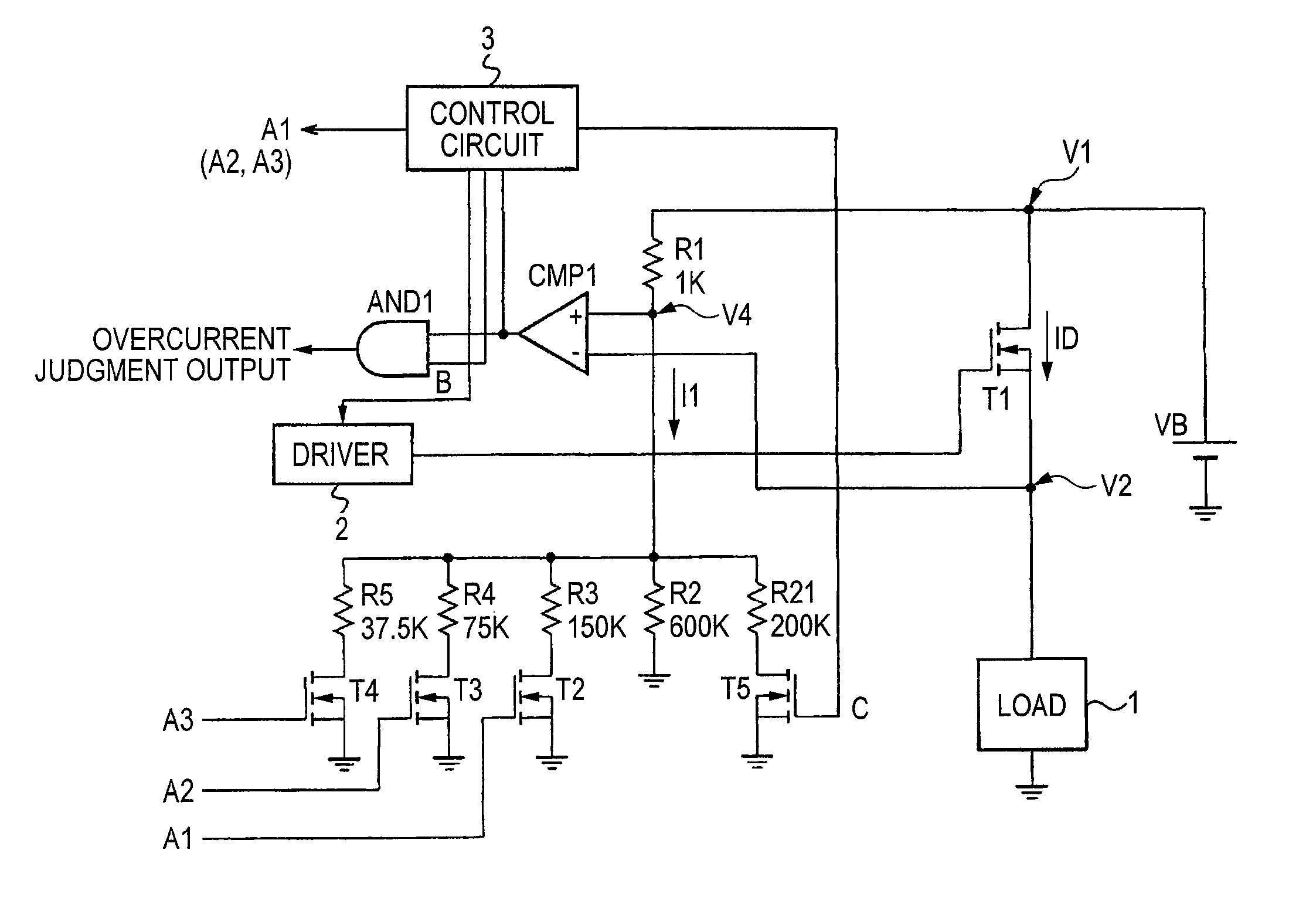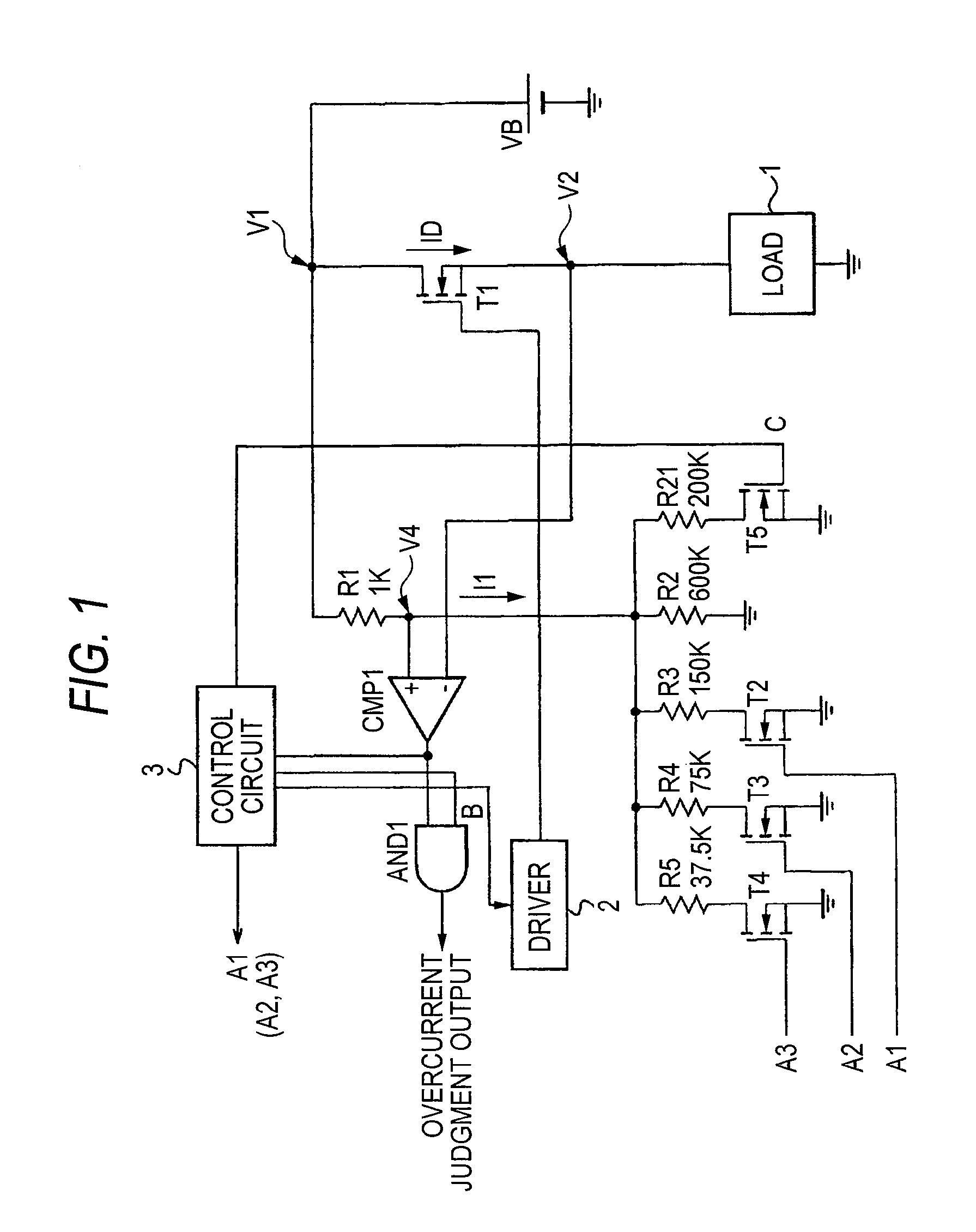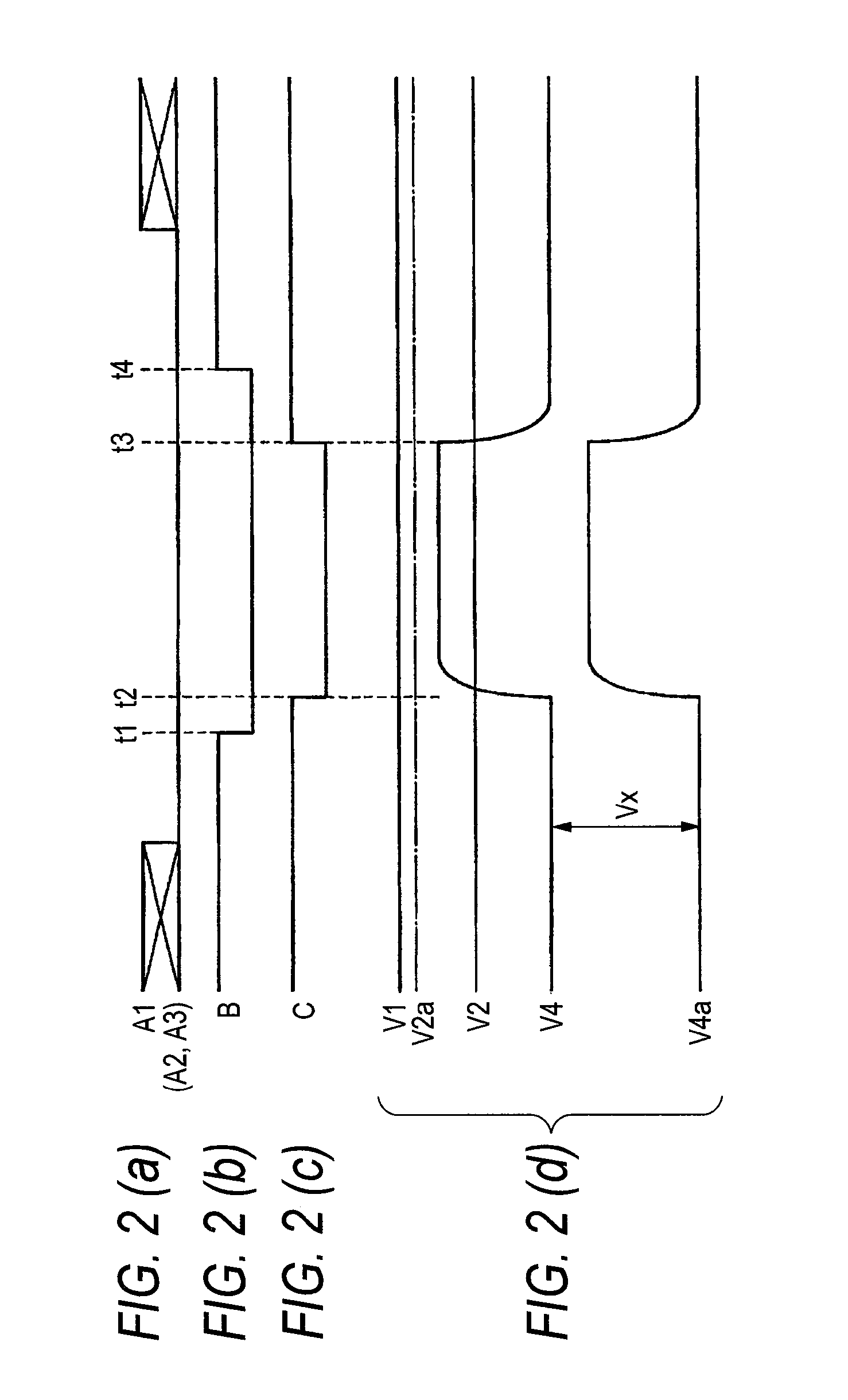Load driving device with diagnosing unit for overcurrent detector
a driving device and overcurrent detection technology, applied in the direction of emergency protective circuit arrangement, emergency protective arrangement for limiting excess voltage/current, etc., can solve the problem of circuit not being reliably protected, fet t101 may be broken or burned, circuit protection cannot be given, etc., to prevent erroneous overcurrent detection
- Summary
- Abstract
- Description
- Claims
- Application Information
AI Technical Summary
Benefits of technology
Problems solved by technology
Method used
Image
Examples
first embodiment
[0041]Embodiments of the present invention will be hereinafter described with reference to the drawings. FIG. 1 is a circuit diagram showing the configuration of a load driving device having a self-diagnosing function according to the invention.
[0042]As shown in FIG. 1, this load driving device is provided with a series circuit of a battery VB, a MOSFET T1 (semiconductor device; hereinafter referred to simply as “FET”), and a load 1 such as a lamp or a motor.
[0043]A driver (driving circuit) 2 is connected to the gate of the FET T1. When a drive signal is output from the driver 2, the FET T1 is turned on and the output voltage of the battery VB is applied to the load 1 to drive it.
[0044]The drain (first electrode; voltage: V1) of the FET T1 is grounded via a series circuit of resistors R1 and R2, and the connecting point (voltage V4) of the resistors R1 and R2 is connected to the plus-side input terminal of a comparator CMP 1. The source (second electrode; voltage: V2) of the FET T1 ...
second embodiment
[0070]More specifically, in the load driving device the resistor R6 is provided between the source of the FET T1 and the minus-side input terminal of the comparator CMP1 and a series circuit of the resistor R7 and the FET T6 is provided between one end of the resistor R6 and the ground. The gate of the FET T6 is connected to the source of the FET T5.
[0071]Next, the operation of the second embodiment will be described. In an ordinary state, the load driving device according to the second embodiment operates in the same manner as that according to the first embodiment. A diagnostic operation will be described below with reference to a timing chart of FIG. 4.
[0072]In a diagnostic operation, the level of the control signal B is changed to “L” at time t1, whereby the level of the output signal of the AND circuit AND1 is fixed to “L.” A control signal C is input to the gate of the FET T5 at time t2, whereby the FET T5 is turned off. As a result, the voltage V4 increases as in the case of...
third embodiment
[0077]The operation of the third embodiment will be described with reference to a timing chart of FIG. 6. The example of FIG. 6 is the same as the examples of FIGS. 2 and 4 in that a diagnostic operation is performed in a state that the control signals A1-A3 are at the L level and that in the period from time t1 to t4 the control signal B is set to the L level to fix the output level of the AND circuit AND1 to “L.”
[0078]The level of the control signal C is changed from “L” to “H” at time t2, whereby the FET T6 is turned on, whereupon a current flows through the resistor R6 and a voltage drop occurs there.
[0079]The resistance values of the resistors R6 and R7 are set so that the magnitude of the voltage drop (V2-V3) is somewhat larger than the standard judgment voltage (V1-V4). As a result, if the overcurrent detection circuit is functioning normally, in the period from t2 to t3 a relationship V34 is established and hence the output signal of the comparator CMP1 is inverted. The outp...
PUM
 Login to View More
Login to View More Abstract
Description
Claims
Application Information
 Login to View More
Login to View More - R&D
- Intellectual Property
- Life Sciences
- Materials
- Tech Scout
- Unparalleled Data Quality
- Higher Quality Content
- 60% Fewer Hallucinations
Browse by: Latest US Patents, China's latest patents, Technical Efficacy Thesaurus, Application Domain, Technology Topic, Popular Technical Reports.
© 2025 PatSnap. All rights reserved.Legal|Privacy policy|Modern Slavery Act Transparency Statement|Sitemap|About US| Contact US: help@patsnap.com



